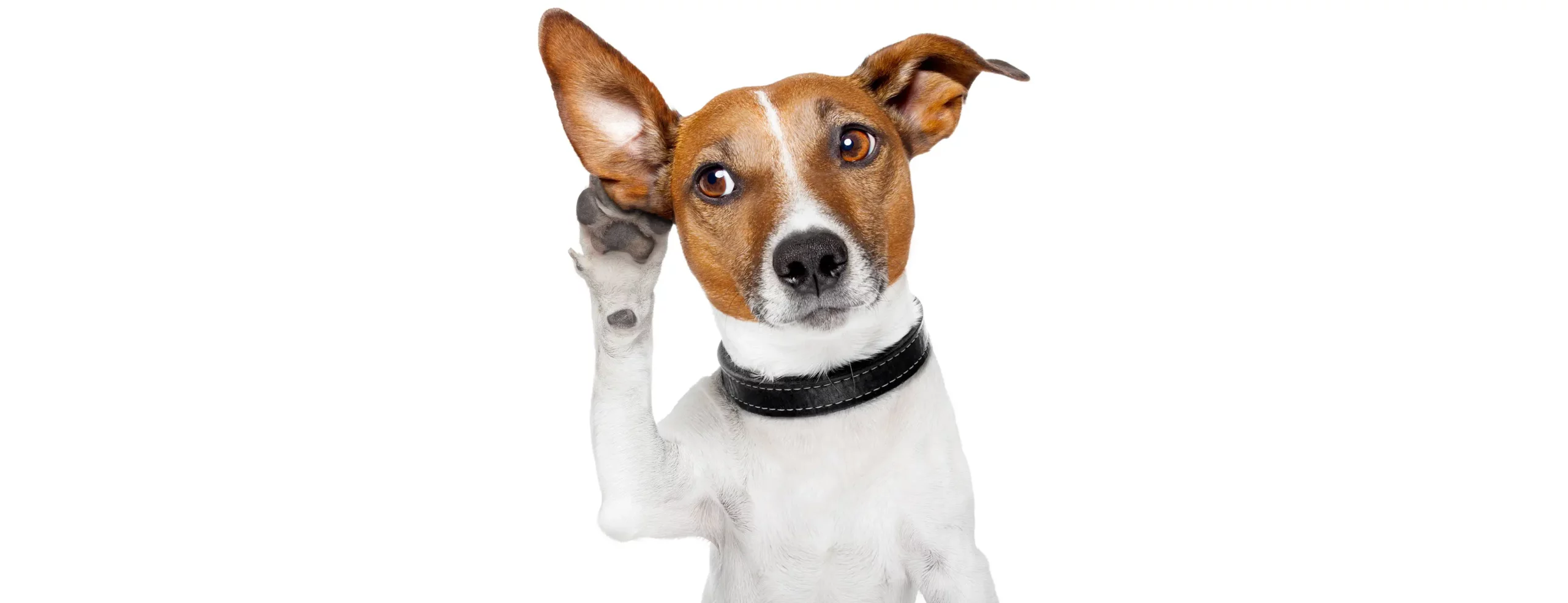Thinking of getting a dog from a pet shelter? Here's the ultimate guide to making sure your four-legged friend transitions into your Family seamlessly:
THINGS TO CONSIDER
Dog Size
It’s important to choose the proper pet for you, the family & your lifestyle. A 100 lb dog might not be the best idea if you have no idea how to handle a larger dog.
They're Not Being Their True Self
You're not seeing the dog's true personality at the shelter for a number of reasons. Keep in mind, they've been cooped up for God knows how many hours. Please remember that the shelter conditions are terrifying for most animals. It's noisy, they’re scared. They do not get any attention; love or compassion. They might look thin as the food budget is low quite low. They get the cheapest food that’s full of fillers and toxins. More importantly, they don't get to go outside. No one would be happy in these conditions, so don’t judge the dog too quickly.
Time to Acclimate
Dogs will need time to acclimate to their new home. Take gentle baby steps with them.
The 3-3-3 Rule:
- They need three days to decompress.
- Three weeks, to learn your patterns and become acclimated.
- Three months to feel at home.
Bringing Your Adopted Pet Home For the First Time
Have the family waiting with treats on hand. As they come in, they can have the pet sit and give them a treat. Sometimes it's good to just ignore them completely and leave a few welcome treats on the floor.
THE BEST TECHNIQUE FOR RE-NAMING YOUR DOG
Adopted dogs may have had a name or two behind their belt. If you chose to give them a new name, this technique works well:
- Train between 10-20 minutes maximum per day; before mealtime is best.
- You’ll need two humans.
- Be mindful, it usually takes one to two weeks for them to start to recognize their new name.
One person sits on one side of the room, one person is on the other. Each of you has one hot dog cut up into small pieces. Start with one person calling out the dog's name. When the dog comes over, give him or her a piece of the hot dog. Then the other person does the same. When the dog comes over, reward them by giving them another piece of the hot dog. Repeat for 10-20 minutes max.
HOW TO SPEAK TO YOUR PET
Speaking to your pet like a human helps ease their anxiety & aids them to understand. By using some of the phrases below, I personally noticed a big difference in my pet's reactions and behaviour. Communicate with them where you’re going, why you’re going, and when I will be back. Talk to them just like you would another person.
Here are the phrases I use on my pets. Feel free to swipe & deploy:
I need to run to the store:
- I'll be gone for an hour and a half, but I will be back. I love you and I'll see you soon.
Don’t want my pet to climb on furniture:
- Four on the floor, please.
When they chew on something they shouldn’t be:
Chew this toy instead of my shoe or instead of my finger
Introducing a new pet to the home:
They’ll be another animal (dog, cat) coming to live with us for a little while, you guys are going to be friends
Picture them getting along and being happy together.
CHANGING BAD BEHAVIOR
Biting
Dogs don’t bite out of the blue. Many bites can be prevented if you understood the state your dog is in. Here are signs to watch for:
- Yawning could mean that they are anxious and want to be left alone.
- Tail high, body stiff, and mouth closed, back off!
- Tail tucked, even if wagging, could mean I’m worried, saying please stay away.
- Dogs turning their head away, I don’t want to be bothered.
- Tongue flick and stiff tail wag are signs the dog is unsure, so stay away.
- Freeze stare is a very dangerous sign, the dog will bite if you persist.
Always reward a new pet good behavior.
Excessive Barking
No one likes excessive barking. It’s important to stay as calm as possible when the barking starts. Don’t bark. Or be quiet. What picture do you hold in your mind when you say that? Them barking. Hold a mental picture of them sitting or standing quietly. Because if I say to you: Don't think about a cow. What’s the image you instantly saw? A cow. Focus your attention on the result you want. Don’t get frustrated or angry at them. Keep a level head, remain calm, and see your dog reacting to your commands quickly and calming down even faster.
Everything is frequency and vibration. Like when you've thought of someone you haven't talked to in years and then, all of a sudden, they call you. There are no coincidences.
Here is what to do when the doorbell rings:
- If your dog reacts say, “be quiet”.
- Whatever you do, avoid, communicating, “don't bark”.
- If the dog continues to bark you can say, “OK, show me”. All while holding the picture of them being quiet in your mind.
CRATE TRAINING
A dog needs to get used to his or her crate before it can be used day to day. Do not use the crate as a punishment. This needs to be their happy & safe space.
I recommend you start by feeding them in the crate so they get used to going in and out with ease. Once they do this easily, set up their bowl where you would like to teach them to eat. Bigger dogs should have their crate on a raised stand. Make sure they have plenty of water. You can get the water bowl that clips to the cage.
Do not leave your dog in the crate for long periods of time. And make sure your crate is the proper size for them.
Crate Training With Multiple Pets
If you have multiple pets and have never crate-trained before, follow these steps.
Crate training can take up to three weeks:
- You never want to train dogs together
- Put the new pet in the crate
- Slowly, one at a time introduce the new pets to them for a short period of time
- Then reverse. Put your older dog in the crate
- Let the new pet sniff around them in the room
- The dog outside the crate should have a leash on.
- Communicate with them as you would talk to another person.
Never
Don’t leave your dog in a crate for 8+ hours a day, expecting them to hold their urine.
Bedtime
Some dogs experience severe separation anxiety. Always be sure to communicate with them.
For example:
At night let them know that it's bedtime. You can say, “crate” then put them in the crate. For dogs like this, its best to put the crate close to your bed. If this is not possible, you may have to sleep on the floor next to them for a few days till they get acclimated.
For one dog I fostered, I had to sleep on a cot with my hand in the crate, so it was touching him. I was able to slowly move away each night and then I was able to sleep in the other room and he did not cry. He slept through the night. Usually, my crates are open, and the dogs will naturally go in there and lay down at different times of the day.
LEASH WALKING
If your adopted dog is a puppy or rescue dog, there’s a high probability they may have never been on a leash walk before. I recommend getting a martingale collar. Have it loose so you can fit your fingers under the collar easily.
As you gently pull it, the collar tightens up, but it doesn't stay tight on the neck. Have them start by walking on your left if your right hand is stronger. Hold the leash with both hands. Keep it short and close to my body and walk with them.
I also like to train them to leash walk with a prong collar. When a prong collar is fitted properly, it is designed to be the most humane way to train and NOT harm your dog.
Remember, it's important to use baby steps with them. Some things to keep in mind:
- Don't allow them to sniff everything until I say it's OK to stop.
- Do a short training session with the prong collar for several days.
- Do not start long walks with a prong collar if your dog never had one on before.
- Praise them if they’re walking well.
- You must do a little bit each day.
- Give a quick little pull for a correction followed by a correction noise like, "at”!
- If the dog is pulling too much, turn in the other direction immediately.
- Communicate, “right turn” as you change direction. (this should be part of number 2
- If another dog is coming, and they start to react simply say, “right turn” and walk away.
- Alternatively, you can hold them a little bit closer to you and go to the other side of the street and keep walking.
- If they turn to the other dog, a quick little pull with the collar and say, “AT! AT!”
TRAINING YOUR ADOPTED PET
Your Dog to Sit
Pay close attention to how your pet responds. Don’t use hand gestures if they are fearful or reactive to it. Hand gestures can scare a pet especially if they were abused.
Assuming we have green lights, and your dog is not scared:
- Take a small step towards the dog
- It's important to give the command, “sit” once.
- While hand gesturing: raise your hand out and hold it flat
- If they're still stubborn and won't sit, you could gently take two fingers and push down lightly on their hip and pull their leash back to get them to sit gently. Never pull hard and never push hard.
- When they sit, reward them with a treat.
- After a few days, they sit and no treat till they look at you
- Eye contact for a second. Don’t make it a staring contest.
Dogs do not like to be stared at. Within a day or two of working with them for five or 10 minutes on it, you will see them pick it up quickly. Repetition is key!
You can use the same technique to teach them to lie down.
You must train yourself to hold these pictures of what you want them to do because usually what you are thinking of, is what happens.
For your cat do the same thing, hold that mental image of them using the litterbox.
feeding
Feeding your dog a high-quality diet is really important. Get them the best food you can afford. Your dog may have been at the shelter for a while and may be used to eating really bad food. There is a chance, your dog may not like the new food. If this happens, this is to introduce their new food:
- Slowly introduce the new food mixed with the old food.
- Then go from 1/4 new for a few days to.
- Then 1/2 a few days.
- Then3/4 then.
- Until you reach a fully replaced switch.
My dogs are on a raw diet. I use Blue Ridge Beef. They get ground chicken and bone and ground innards and a raw chicken leg every day. If it's not cooked, they can crush up the bone and it won't splinter.
If you're feeding them kibble, buy the best one that you can. They're made with a lot of fillers and garbage and that's not what they would eat in the wild.
If that is their primary diet, you're going to see them react to the toxins with skin issues, dry skin, and a dull coat. Could cause upset stomach and digestive problems.
Feeding them raw, you're probably going to have little to no vet visits because they're getting full nutrition from the food, and they also have a smaller poop and poop.
If your dog must go out right away after eating kibble, you’ll see this no more when they are on a raw food diet.
Here's my recommended daily routine:
- 5:00 AM, let the dogs outside in my fenced-in backyard. When they're ready to come in I let them in and prepare their food. I feed my dogs in the same room, but everyone is separate from each other. I feed them their full daily serving one time a day.
- You may need to keep them in a separate room or crate if they eat faster than the others or if there could be aggression over food. You don't know a rescued pet's history. They could have been abused and starved for food.
- I usually wait and let the food settle for about 15 to 20 minutes
- 6 am, I let them out again. And usually, the larger-sized dogs, if they also drink a lot of water, it's good to let them wait 15 to 20 minutes before they go outside because if they're horsing around playing, they could flip their stomach and that could cause a big problem. An older dog of course needs to go out more often.
- After I've changed their water cleaned the cat box, wash their bowls,
- 7 am, I go to take them for a walk. It's a good idea to be mindful of the time of day; earlier in the day or in the evening, when the pavement is cooled down.
- At noon after approximately 3 1/2 to 4 hours, I let them out again.
- Then they go out at approximately 5:00, I let them out again at 7 and then again at 10 before bed.
THE BEST DOG PROTECTION AGAINST PARASITES, FLEAS, TICKS, FUNGUS & MORE!
There is one recommendation I suggest for almost all four-legged clients to protect them against bed bugs, fleas, ticks, roaches, ants, lice mites, spiders, fungus gnats, and parasites. My animals get food-grade diatomaceous earth from Earthworks.
A little mixed in their food and I have no flea and tick issues. I give them one to two teaspoons. It can be used topically on animals but be careful not to get it in their eyes and not to breathe it in. To get it under the fur, start at the base of the tail and pet them towards the head, sprinkle on as you go until you reach the neck. It works great as a safe bug repellent around the house inside and outside.




0 comments